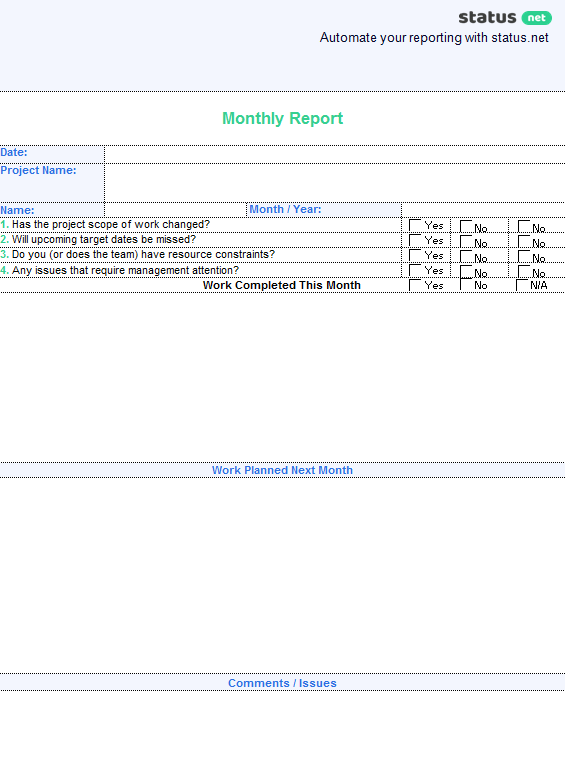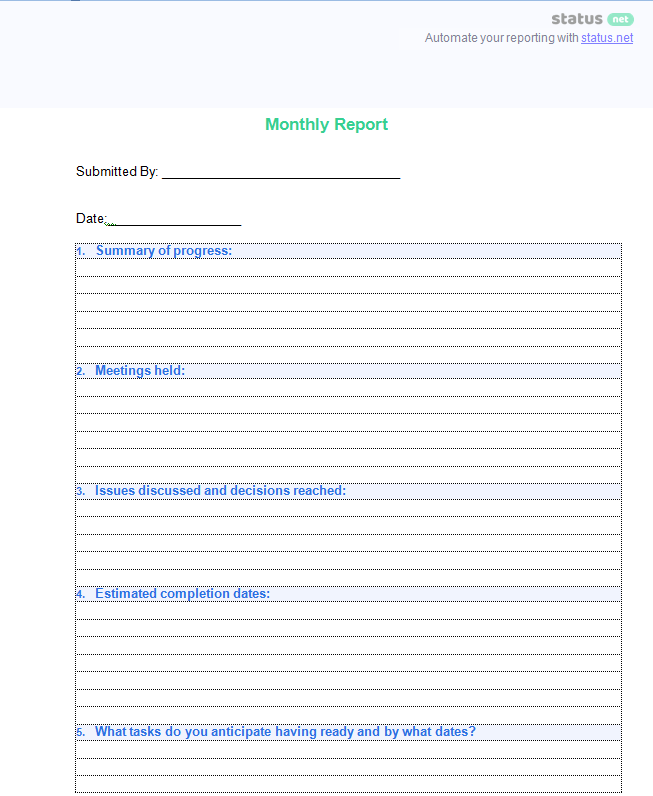
Keeping stakeholders engaged is easily done through monthly reports. A monthly report template is handy when you need to create a high quality report.
There are 3 types of monthly reports:
1) Often a monthly status report is provided to the supervisor as an update of employee’s plans and activities. Most probably, it will also go to the manager of the supervisor as an input to his own report. It also serves as documentation of employee’s work history, and it’s a good reference during annual performance reviews.
2) Monthly project report. This type of report does not require as many details as a weekly project report does, but it provides a higher-level view of the developments in the project. Stakeholders would usually be interested in tracking the budget, expenditures, the quality of project outputs, and the risks, challenges, and issues affecting the project.
3) On the other hand, contractors also provide a monthly progress report to give the client a head’s up on where the project is, at the moment. Because of their setting, the client and the contractor might not see each on a regular basis. The client himself might not have enough time to monitor the developments of the project. In this situation, a monthly project status report also serves as a vital medium of communication between the contractor and the client so the report should be as detailed as possible.
A monthly report is a presentation of the activities and accomplishments of an organization for the previous month. The content of a monthly report typically includes:
– A summary of the company/department/person’s performance for the month
– Highlights from key projects that were completed during that period
– Projected goals for the next month
– Financial information about revenue, expenses, and profit margins (if applicable)
– Information about new hires or departures (if applicable)
Here are some tips on how to come up with a monthly status report which will effectively communicate the project developments to the top management, the stakeholders, or the clients:
It is important to have an objective in mind before beginning the monthly report. This will help you stay focused and not get distracted with irrelevant information.
Objectives for a monthly report could be:
1) To summarize performance for the month
2) To identify what went well and what didn’t go well
3) To establish a plan of action for next month
It is important to have a specific template for your monthly report so that you can be consistent. This will help you stay on track with all the necessary information that needs to be included in it.
Keep in mind that the report should be free from any errors, grammatical or typographical, and it should also be noted that the quality of the report reflects the personality and professionalism of its writer.
Monthly status reports also help the team and the company reflect on what they can accomplish during the month and determine which among the initiative made are producing positive outcomes.
Valuable and action-oriented, monthly status reports should also state the next steps for the project, team, or company. Enterprises or organizations may have a standard format or template for a monthly status report which asks for a particular set of information about the project or performance targets that the management would inform with.
Try to keep the report within one to two pages: enough to update the readers about the project, and not to take too much time from the users.


